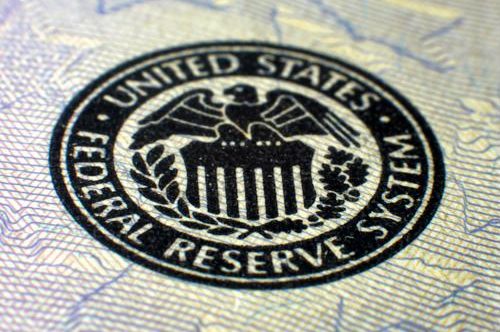Whatever else can be said about it, this must be one of the most interesting and entertaining chapters in the history of central banking. Not since John Law slipped out of Paris in 1720, leaving in the dead of night to avoid an angry mob, has there been anything like it.
Like Law, Jerome Powell has made a huge mess of things. A city slicker in the financial wilderness…with no compass to guide him, other than the Fed’s silly models and claptrap theories…he got hopelessly lost. And now he’s caught…trapped, between the inflation he created…and the reckoning he was desperate to avoid.
Inflation has already returned to levels not seen since the 1970s. The Fed needs to stop printing; everybody says so.
But if Powell fights inflation, the economy will collapse; it depends on ultra-low interest rates and free-flowing credit. If, on the other hand, he lets inflation rip, the dollar will die…bringing with it financial, social, and political chaos.
Occasionally, a trapper or hiker will get stuck in the mountains, far from civilisation. He may break a leg…or like Aron Ralston in 2003…may get his arm pinned by a falling boulder. Ralston suffered for days. Then, near death, he had a vision of himself alive…but missing an arm. The next day, he took out his penknife and hacked off his arm, saving his life.
Twice wrong
In order to escape his trap, Jerome Powell needs to cut away 14 years’ worth of bad policy. Does he have the stomach for it? Could he endure the pain?
We doubt it. But both from within the Fed and from the outside world, come hallucinations of successful surgery. Here’s JPMorgan Chief Jamie Dimon, in the Financial Times:
‘[Dimon] told investors he did not envy the Fed for the steps the US central bank would need to take to end its ultra-loose policies but urged it not to “worry about volatile markets unless they affect the actual economy”. “If the Fed gets it just right, we can have years of growth, and inflation will eventually start to recede. In any event, this process will cause lots of consternation and very volatile markets,” Dimon wrote.’
He’s wrong on both counts. After bumbling for so many years, there is no chance that the Fed will ‘get it just right’. Nor is it possible that genuine tightening wouldn’t ‘affect the actual economy’.
Still, Powell’s compadres at the Fed press him to show a little courage. Here’s Bill Dudley, former inflation dove…now suddenly sporting sharp claws:
‘Investors should pay closer attention to what Powell has said: Financial conditions need to tighten. If this doesn’t happen on its own (which seems unlikely), the Fed will have to shock markets to achieve the desired response. This would mean hiking the federal funds rate considerably higher than currently anticipated. One way or another, to get inflation under control, the Fed will need to push bond yields higher and stock prices lower.’
And here’s another leading Fed voice, Lael Brainard, as reported by The Wall Street Journal:
‘“It is of paramount importance to get inflation down,” Ms. Brainard said Tuesday at a virtual conference hosted by the Federal Reserve Bank of Minneapolis. “Accordingly, the committee will continue tightening monetary policy methodically through a series of interest-rate increases and by starting to reduce the balance sheet at a rapid pace as soon as our May meeting.”’
As of Thursday afternoon, the Fed was bound and determined to do what needed to be done — and less! Here’s CNN:
‘The Federal Reserve is ready to raise interest rates at a faster pace to get a handle on America’s pervasive inflation problem, according to minutes from the central bank’s March meeting released Wednesday.
‘The minutes said “many participants” at the Fed’s meeting in March noted they would have preferred a 50 basis point increase to the federal funds rate in light of high inflation.’
It almost makes us feel sorry for poor Jerome Powell. He clearly doesn’t know what he’s doing. He is, after all, a big city lawyer, lost in a Yellowstone of finance. No hope of rescue. No way out.
And the catastrophe is underway…whether he acts or not.
Piles of cash
The COVID crisis caused the Fed to do a lot more of what it never should have been doing in the first place — printing money. In the last two years, its balance sheet (where the new money is tallied) rose more than it had in the entire 107 years since it was founded — by more than US$4 trillion.
The money was then transmitted to Wall Street by buying bonds. But the Fed’s money printing ended last month. Now, as those bonds mature, the Fed’s balance sheet shrinks, and the US’s money supply shrivels. Quantitative Easing has given way to Quantitative Tightening, which is a whole different thing.
And we’re not talking about small amounts. In 2020, the Fed added US$3 trillion of new money. Now, that money is scheduled to go away at the rate of nearly US$1 trillion per year.
In other words, the Fed giveth — and unless it giveth more and more — what it gaveth will now go back whence it cometh. Along with it will go as much as US$50 trillion in fake, new wealth created since 2007…and a whole credit-addled economy, including trillion-dollar federal deficits, meme stocks, buyback programs, NFTs, zombie corporations, million-dollar shacks…and much, much more.
The thought of it must trouble Jerome Powell’s sleep. But what can he do…puff up his courage…and try to remember where he packed his knife.
Regards,
 |
Bill Bonner,
For The Daily Reckoning Australia

